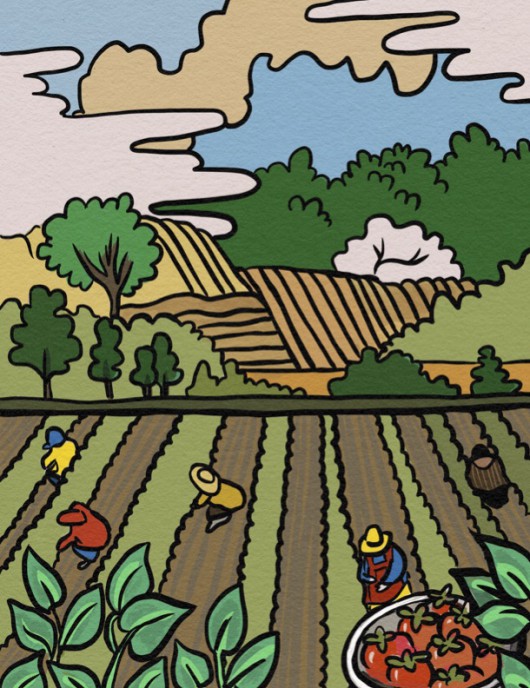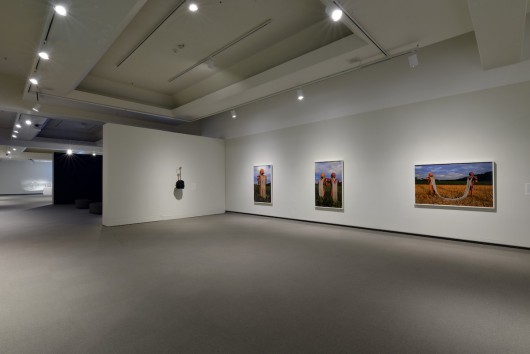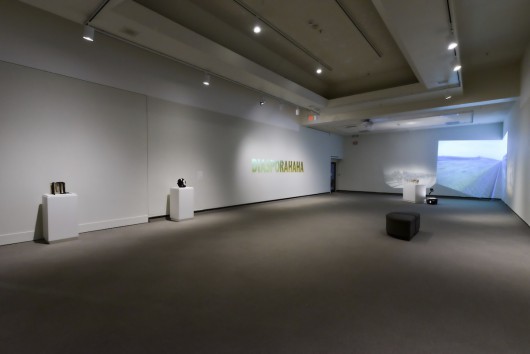Human Capital: A publication by Briarpatch Magazine & the MacKenzie Art Gallery
Art by Emmie Tsumura
To accompany a new exhibit at the MacKenzie Art Gallery in Regina, Briarpatch Magazine partnered with the MacKenzie to produce a special digital package of writing on migration, work, and a world beyond borders.
Featuring new commissions and pieces from the Briarpatch archives, the digital publication seeks to expand conversations around Canada’s immigration policy, and migrant justice. Articles in the publication are by Syed Hussan, Maya Menezes, Zviko Mhakayakora, Gwendolyn Muir, Tak Pham, and a round-table discussion with members of Decolonizing Relations.
The publication is co-edited by Saima Desai, editor of Briarpatch Magazine; and Tak Pham, assistant curator at the MacKenzie Art Gallery. The publication is designed by Emmie Tsumura with artwork contributions from Emily McGratten and Derek Chow.
You can view a PDF of the digital publication by clicking here.
About the exhibit
Human Capital presents work that offers insight into the impact of Canada’s immigration policies and history: how it treats humans as capital, and the role it plays in shaping the complex and contested the formation of a “Canadian identity.”
Canada, like most Western nations, has a long history of immigration campaigns that promise economic prosperity to both the state and immigrants. As a result, Canadian immigration policies have historically focused on maximizing economic contributions while minimizing disruption to the “fundamental character of the Canadian population,” as remarked by Canadian Prime Minister Mackenzie King in 1947.
Canada’s current, points-based immigration system, in place since 1967, attempts to provide a non-discriminatory framework for assessing individuals and collectives and directing them to strategic economic and geographic sectors. Once inside Canada, new immigrants are expected to boost the country’s economy by producing more for less. The system has little regard for existing marginalized communities, as it continues to reinforce “Canadian values” with an ever-growing intake of immigrants, whose admittance is driven primarily by the economic demands of the country. For all these reasons, the exhibition asks: What else is lost when human potential is measured as units of capital?

Human Capital, 2020-2021. MacKenzie Art Gallery, Regina. Photos by Don Hall.
Articles
Human Capital and the Formation of Canadian Identity by Tak Pham
As a social fact, multiculturalism is now a reality in Canada, with roughly 20 per cent of the Canadian population – some 6.2 million people – foreign-born as of 2015. They have come from over 200 countries and speak 94 different languages. Despite its diversity, Canada, like other western nations, utilizes a strategy of erasure to refine its ideal of national identity, which is far from one of multiculturalism.
The Human Labour of Building Canadian Identity by Zviko Mhakayakora
We live in a world that relies heavily on the migration of families and individuals. What sacrifices would they have made to get to these lands of opportunity, to seek a better life away from ‘home’? What are they running from – or better yet, what are they running toward?
Migrant workers are the present and future of low-carbon care work by Maya Menezes
Migrant workers are keeping us alive through catastrophes like COVID-19, but they face an impossibly complex, punitive, and high-stakes immigration system. It’s time to completely overhaul the way we value those who do the most vital, life-giving work.
Decolonizing Relations on Treaty 4 Territory by Saima Desai
Indigenous people, immigrants, and settlers in Regina’s Decolonizing Relations group discuss land, labour, and solidarity.
The Cost of Managed Migration by Gwendolyn Muir
The Temporary Foreign Worker Program has spawned a recruitment industry in Guatemala that promises workers risk-free employment in Canada, but delivers precarity and exploitation.
From the Briarpatch archives
Unbordering by Syed Hussan
In this world, a world where many worlds coexist, there would be no forced migration, no mass extinction.
From the Briarpatch archives


